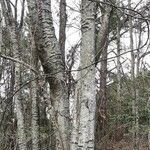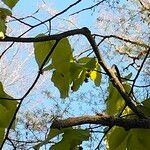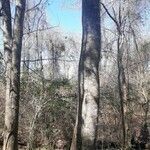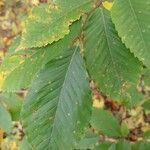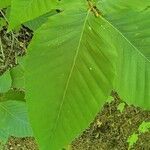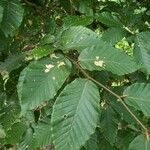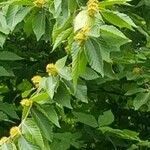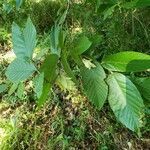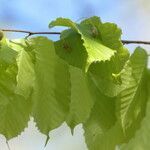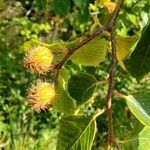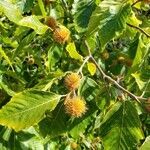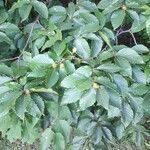A medium sized tree. It grows to 25 m high. It spreads 10 m wide. The trunk is 100 cm across. It loses its leaves during the year. The leaves are alternate and simple. They are narrowly oval and have teeth along the edge. The tip has a long point and the base is wedge shaped. The upper surface is dark bluish-green and it is paler underneath. The male and female flowers are separate but on the same tree. The male or pollen flowers are in ball like clusters at the end of long branches which hang down. The female or seed flowers are in small clusters of 2-4 in the axils of leaves. The fruit are nuts. They are edible. They usually occur in pairs in bristly red husk. This opens in 4 parts. Each nut is like a sharp 3 sided pyramid. They are 18-22 mm long. They ripen and are shed in autumn. The nuts are edible.
Trees , to 20(-30) m. Bark gray, smooth. Twigs glabrous at maturity, or with scattered, straight, silky, simple hairs, prominent ringlike bud scale scars at beginning of each year's growth. Buds narrowly fusiform, to 15-20 mm, apex acute, scales few, silky light brown or glabrous. Leaves: petiole 4-12 mm. Leaf blade ovate or narrowly ovate, rarely obovate, 60-120 × 25-75 mm, base cuneate or subacute, apex acuminate; surfaces abaxially with scattered straight silky hairs, these often concentrated on midrib, occasionally glabrous or much more villous. Fruits: cupule brown to reddish brown, 15-20(-25) mm, opening at maturity to reveal nuts; nut 15-20 × 10-18 mm wide, glabrous or puberulent, often hollow even when full-sized.
